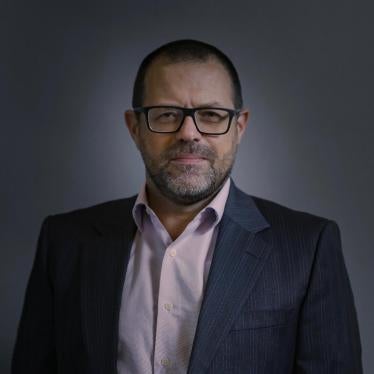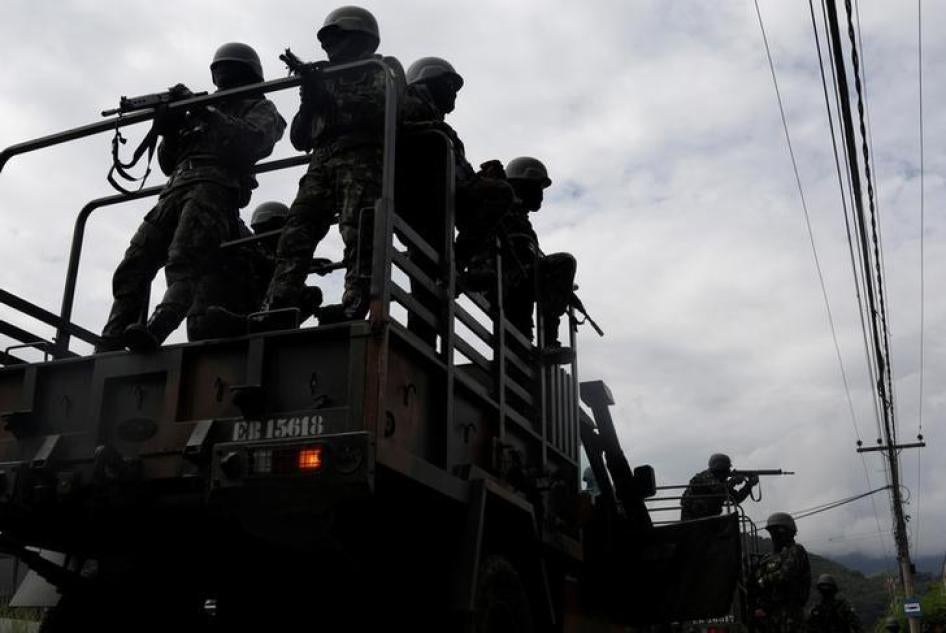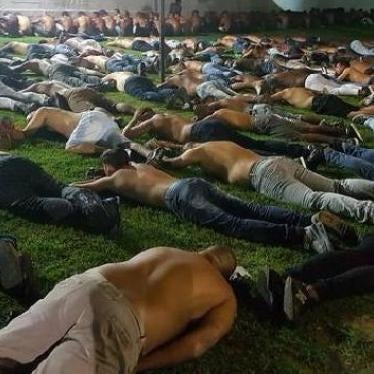Marcelo Silva Vaz, 32, and Bruno Coelho da Agonia, 26, were inseparable in life, and in death.
“Bruno was a wonderful young man,” Marcelo´s mother, Márcia Silva, told me, as his father looked on sadly. “They were always together.”
The young men met in 2010, their parents said, while working at a tuna cannery in Rio de Janeiro. Bruno was a bachelor and a fan of romantic music who lived in a small apartment behind his parents’ house. Marcelo was a father of four who volunteered taking poor children to the beach to play frescobol, a paddle ball game. He eventually left the cannery and worked as an Uber driver.
On November 10, 2017, Bruno climbed onto the back of Marcelo´s motorcycle, and they headed for a baile funk, a street dance party, in the Complexo do Salgueiro favela of the city of São Gonçalo, near Rio de Janeiro.
They never returned.
They were killed, along with five other men, in the early hours of November 11. An eighth victim died of his wounds weeks later.
As a researcher for Human Rights Watch, I have collected new witness testimony that not only lays bare the terrible scenes that unfolded on November 11, but also provides credible evidence that the killers may belong to the army’s special forces battalion.
Members of the army’s special forces battalion and of CORE —the elite unit of Rio de Janeiro´s civil police— arrived at the site within minutes. They were conducting a joint operation whose objective the commanders still have not clearly explained.
What the army and civil police did say is contradictory and incomplete. The head of CORE, Rodrigo Oliveira, who participated in the raid, told civil police investigators 20 hours after the shooting that the victims were men who had fired on security forces. Two days later, the Eastern Military Command denied any such attack.
In their official statements, CORE police officers did not mention survivors or witnesses.
At least three men injured bled on the ground for more than an hour and a half. The soldiers and police officers who came to the scene did nothing to help them and even slowed down relatives’ attempts to take their loved ones to the hospital.
The forensic expert who analyzed the site about three hours after the shooting said bodies had been moved and that the police had not secured the crime scene.
It all started on November 7, when, as the army itself has admitted, helicopters transported personnel to forested areas of the Complexo do Salgueiro. The plan was to lie in wait for criminal suspects. The operation apparently failed, a justice official told me, because someone tipped off local gang members.
Three days later, at around 11 pm, residents saw men rappelling from helicopters into a forested area near the Das Palmeiras thoroughfare.
At around 1 a.m., the killers opened fire on people passing along Das Palmeiras. ”Leandro” was on his way home from his girlfriend´s house on his motorcycle felt the bullets biting his body and fell.
I use a fictional name for this article because of what he told me right after that: He saw the shooters emerging from the forested area. They wore black, hid their faces behind balaclavas, used gloves, had flashlights mounted on their helmets, and carried rifles equipped with both flashlights and laser-vision. Luiz Otávio Rosa dos Santos, a motorcycle taxi driver who later died, told a Rio state prosecutor that he saw “red light” beaming from the rifles used by the men shooting at him.
As the killers shot their victims, about 30 members of an army special forces battalion and of CORE were approaching aboard three armored vehicles.
Leandro told me that the killers were clearly visible by the side of the road, near a lamppost, when the two armored vehicles passed. The vehicles did not stop.
He lay in agony, half sprawled in a ditch by the roadside for about an hour and 40 minutes. “I felt a pool of blood under me,” he said. He initially heard the cries of another man who had been injured about 10 meters from him, but the cries waned as the man died. Leandro felt dizzy and thirsty. He lost consciousness.
Meanwhile, “Natália”, a relative of his, learned of the shooting and tried desperately to get to him. She said she was traveling toward the scene in a car with three neighbors when several men on foot shouted at them to stop, pointed laser beams at their heads and chests, and ordered them to stick their hands out the windows. The men wore black clothing and balaclavas, as well as helmets mounted with flashlights, she told me.
She said other men on the road and standing in the hatches at the top of the armored vehicle had the same uniforms and gear.
Another woman who was a passenger in a motorcycle taxi that passed by shortly after 1 a.m. gave civil prosecutors a similar description. She said that five men, armed with rifles equipped with laser-vision and flashlights, stopped them, but let them go after checking to see if they had weapons.
The testimony that the killers and the army´s special forces troops wore the same uniforms and carried the same equipment point to the conclusion that the shooters may belong to that army unit.
Natália and her three neighbors rescued Leandro and another man at around 2:40 a.m., she said. Police and army personnel not only refused to help them, she said, but forced their car -- even after they had picked up the victims -- to stay behind the slow-moving armored vehicles. “It took us half an hour to go one kilometer,” she said. They arrived at the hospital at around 4 a.m.
Dos Santos, the motorcycle taxi driver, told a prosecutor relatives found him only at around 6 a.m. He died of his injuries weeks later.
Under Brazilian law, failure to provide help or call emergency services for an injured person is a crime punishable with up to 18 months in prison, should the victim later die.
The killings occurred only weeks after a law entered into force that shields the armed forces from prosecution in civilian courts when they kill civilians during policing operations. Under the new law, only federal military prosecutors can investigate members of the armed forces and file charges against them, and a court panel of four military officers and one civilian will hear the cases.
Civil police investigators and state prosecutors interviewed CORE personnel and civilian witnesses promptly after the shooting, but for months they did not even know the names of the army personnel who participated in the raid.
A federal military prosecutor told me on May 3 that she had interviewed members of the special forces about the November raids, but had not talked to any civilian witnesses, six months later, although she said she intended to.
Meanwhile, the families of those killed suffer in silence. “My world has collapsed,” Márcia Silva, Marcelo’s mother, told me.
And they wait for justice.









